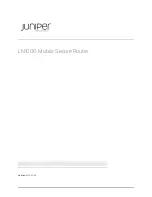
2-34
Vanguard Routing Model
Using Bridging Routers to Connect LANs and Networks
Source Routing
Bridging
Environment
In a Source Routing Bridging environment, the bridge accesses the address and path
to reach the destination address from response to the router discovery frame.
If the sender forwards the packet to a host, depending on the type of Transport layer
service the host uses, the host transmits an acknowledgment to the sender.
How Addressing
Schemes Affect
MAC Bridging and
IP Routing
The following table describes the differences between IP routing and MAC bridging
according to the addressing scheme used:
MAC Bridging
Addressing
IP Routing
Addressing
IP Subnet
Addressing
Data delivery
Delivers data based on
MAC addresses.
Delivers data based on IP
addresses.
Delivers data based on
subnet IP addresses:
network address,
subnetwork address, host
address.
Address style
Flat addressing: each
address identifies a
machine.
Hierarchical addressing:
each address identifies a
network and a machine
on the network.
Multiple directly
connected physical
networks can share a
single network address.
Address attachment
MAC addresses can be
permanently assigned to
hardware units.
IP addresses cannot be
permanently assigned to
the hardware.
IP subnet addresses
cannot be permanently
assigned to the hardware.
Data delivery after
machine relocation
MAC bridging allows
delivery to the same
MAC address when
hardware is relocated.
IP address must be
updated after the
machine is relocated.
IP address must be
updated after the
machine is relocated.
Address table size
MAC bridging over large
networks involves very
large address tables.
IP routing over large
networks requires
smaller address tables.
Same as IP routing
addressing.
Forwarding decisions
Based on exact matches
of full 48-bit MAC
address.
Based on exact or partial
matches of the network
portion of the 32-bit IP
address.
Based on which port to
use to deliver the packet
to the subnet address.
















































